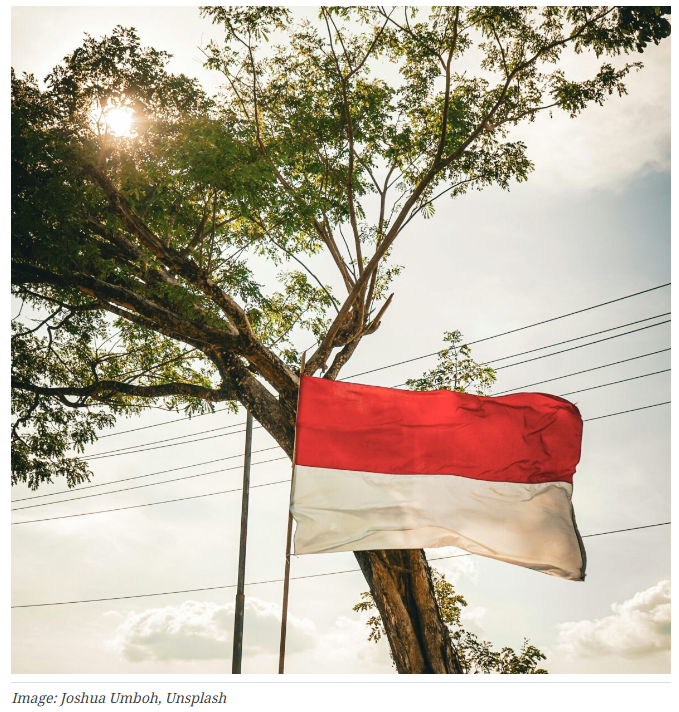A 100% solar Indonesia in 2050
Indonesia has all the solar energy and pumped-hydro energy storage potential required to become a solar giant by mid-century. On current trends, Indonesia will be the fourth largest producer of solar energy by 2050.
August 12, 2024 International Solar Energy Society (ISES)

A future economic and solar giant
In mid-century, Indonesia is expected to be the sixth most populous country in the world with 320 million people. It is expected to be a top four global economy by gross domestic product (after China, India and the US), up from 16th spot today. What happens in Indonesian energy markets matters at a global level in terms of both economic impact and greenhouse gas emissions.
Currently, Indonesia relies heavily on fossil fuels for energy and is a major fossil fuel exporter. Electricity consumption in Indonesia is low by world standards at about 1.1 MWh per person per year. This compares with 6-12 MWh per person per year in developed countries such as the US, Europe, China, Singapore and Australia, and 2-5 MWh per person per year in advanced emerging economies like Brazil, Chile, Mexico and South Africa. Indonesian electricity consumption is likely to increase greatly by mid-century because of rising affluence, rising population and electrification of transport, heating/cooling and industry. The use of clean electricity to “electrify everything” allows complete decarbonization of an economy.
Numerous regulatory and economic indicators point to a rapid move away from fossil fuels as the source of new-build electricity generation in Indonesia. The country has relatively poor wind energy resources because of its equatorial location. However, the Indonesian solar resource is enormous. Importantly, the equatorial climate means that both demand and solar availability vary little from week to week, which eliminates the need for seasonal storage.
If we assume that Indonesian electricity consumption rises to 10 MWh per person per annum (similar to developed economies today) due to rising affluence, and then doubles to 20 MWh per person per annum to accommodate “electrification of everything,” then Indonesia will require about 6,400 TWh of electricity per year in mid-century. This can be compared with the current global electricity consumption of about 30,000 TWh per annum.
In 2023, twice as much solar capacity was deployed around the world as everything else combined. This is compelling market-based evidence that solar energy provides the cheapest electricity today. An affluent and decarbonized Indonesia in mid-century would require the deployment of about 5,000 GW of solar panels (15% capacity factor). Assuming 25% efficient solar panels, the required area of solar panels is 20,000 km2, or 60 m2 (15 kW) per person.
Where can the solar panels be placed?
Indonesia is an equatorial archipelago with a high population density. Fortunately, Indonesia has boundless possibilities for solar panel deployment that have low conflict with environmental values.
Rooftops can accommodate large numbers of solar panels, particularly during the early years of solar deployment. Defunct coal mines could accommodate about 500 GW. Deployment of solar in conjunction with agriculture could accommodate 1000-4000 GW. However, the really large opportunity is solar panels floating on Indonesia’s calm, equatorial, inland sea. Indeed, Indonesia could harvest 500,000 TWh of solar energy from maritime areas that have not experienced winds stronger than 15 m/s and waves larger than 6 m over the past 40 years, which is 16 times larger than current global electricity consumption.
100% solar energy in Indonesia
Storage is required to support solar energy for overnight and longer periods. Batteries can economically provide energy storage for a few hours. However, Pumped Hydro Energy Storage (PHES) is strongly dominant for large-scale energy storage because it is far cheaper. For example, the Snowy 2.0 pumped hydro system under construction in Australia is providing 350 GWh of storage (2.2 GW of power) at a cost of $23/kWh, which is about one tenth the cost of comparable battery storage. In practice, a combination of new and second-life batteries (high power for short periods) and PHES (low-cost long duration storage) is preferred.
Indonesia has unlimited access to premium quality PHES sites in the size range of 5-5000 GWh. For comparison, 5000 GWh is equivalent to the batteries in 70 million electric vehicles. Hundreds of Indonesian sites in the Global Pumped Hydro Atlas are extraordinarily good, with large heads (altitude difference between the two reservoirs) of 600-1600 meters, short pressure tunnels connecting the reservoirs, and cheap reservoirs requiring the movement of small volumes of rock to dam large volumes of water. Overnight storage is a solved problem.
Recently, a high-resolution analysis of a 100% solar electricity grid for Indonesia was conducted, including hour-by-hour matching over a decade of demand, solar energy supply, storage and transmission. The all-in levelized cost of wholesale electricity was estimated to be $77-102/MWh, which is fully competitive with a fossil fuel alternative. Interestingly, the modeling showed that interconnecting all of Indonesia via high-voltage undersea cables was not better than each of the 5 main regions “going it alone”. This is quite unlike the experience of countries at higher latitudes where large-area interconnection strongly reduces storage requirements by smoothing out local weather and demand. In equatorial Indonesia, the weather everywhere is much the same all the time, and this will also be the case for many other sunbelt countries.
It will not be necessary to prematurely close Indonesia’s existing coal-fired power stations, because they produce such a small proportion of global greenhouse gas emissions. The key to effective decarbonization is to stop buying new fossil fuel machines, including power stations, vehicles and industrial furnaces. The existing equipment will mostly retire over the next 20 years, to be replaced by electric versions driven by clean solar energy.




